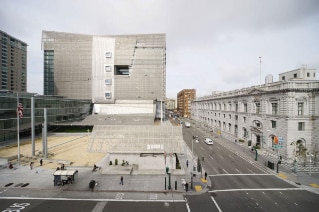
Held in Vancouver, Canada, in 1976, Habitat I was the first United Nations conference that fully sized up the challenges of urbanisation (a phenomenon that had in the meantime mushroomed hand in hand with population, which by the mid-1970s had reached 4 billion). This conference saw the launch of the UN-Habitat programme, dedicated to studying human settlements, the distribution of resources (particularly in countries of the Southern Hemisphere) and the development of strategies to guarantee everyone a “dignified house”.
In 1996, on the tide of the world’s constantly growing population (now approaching 6 billion) and the concentration of people in urban areas (with half of all human beings now living in cities), the United Nations organised a second conference in Istanbul, Turkey, to evaluate Habitat’s two decades of activity and identify new strategic goals heading into the new millennium.
Indeed, cities are seeing an increasing concentration not only of people, but also of economic flows, material consumption and energy expenditure. Cities are consequently also subject to all the ensuing environmental problems (since urban areas are largely responsible for the pollution behind global warming) as well as issues concerning economies of scale and economies of sharing goods and services.
For this reason – despite the signing of the Agenda being naturally incumbent on nations – the real novelty of Quito was the widespread attention that the conference garnered, with some 50,000 people registering to attend. These participants included 500 delegations from cities around the world and 200 mayors. Indeed, Joan Clos, the current executive director of the UN-Habitat programme, was himself mayor of Barcelona for nearly ten years.

The dispute over the concept of the right to the city occurred in this context. The secretariat resolved the clash by including the right’s expression but omitting any condemnation of gated communities or forced expulsions, which in recent years have often been exercised on a large scale. Expulsions is the title of the latest book by Saskia Sassen, who was at Quito with Richard Sennett and Richard Burdett. Together they chaired one of the many events and round tables running in parallel or declaredly as alternatives to the activities of Habitat.
Certainly, the subject of elaborating new forms of property rights that diverge from private property – along with new circular and inclusive economies – remains an underlying issue which inextricably links economy, politics and the city. The Quito declaration quietly proclaims a new right. In a world where a billion people still live in shantytowns and temporary shelters, this can only be considered as a step in the right direction.











